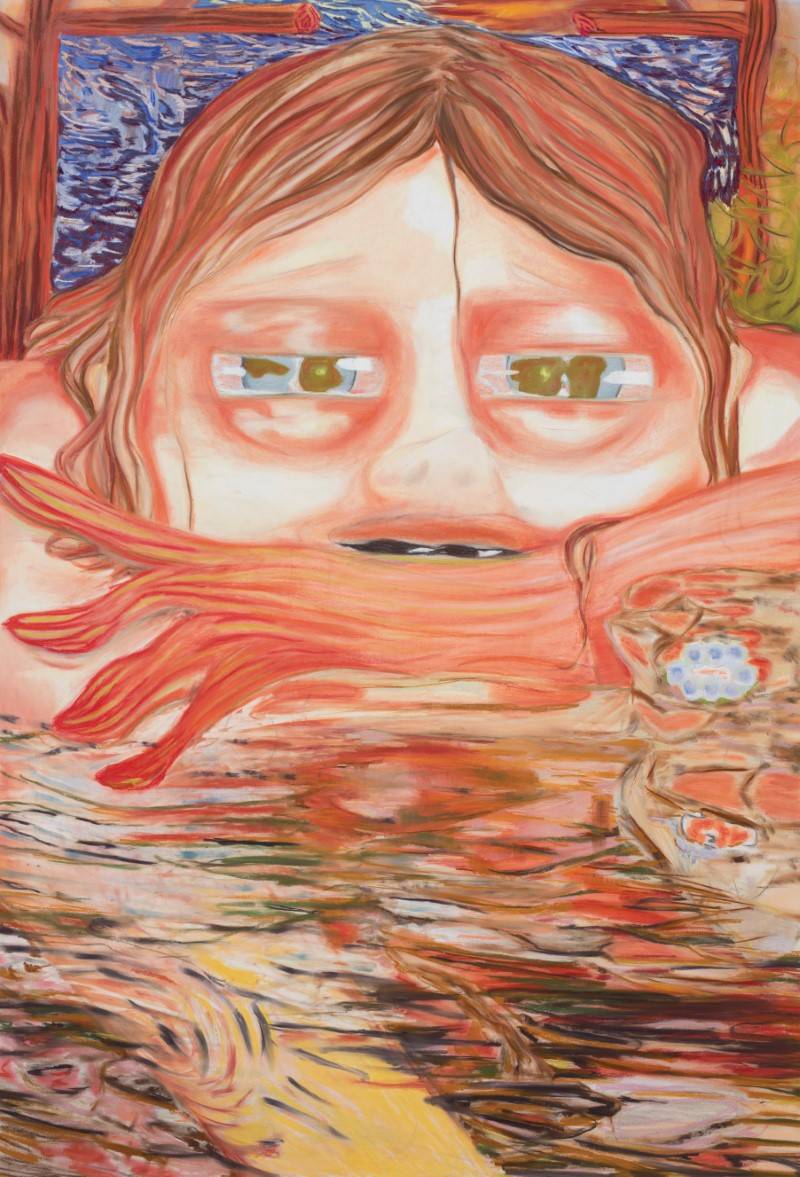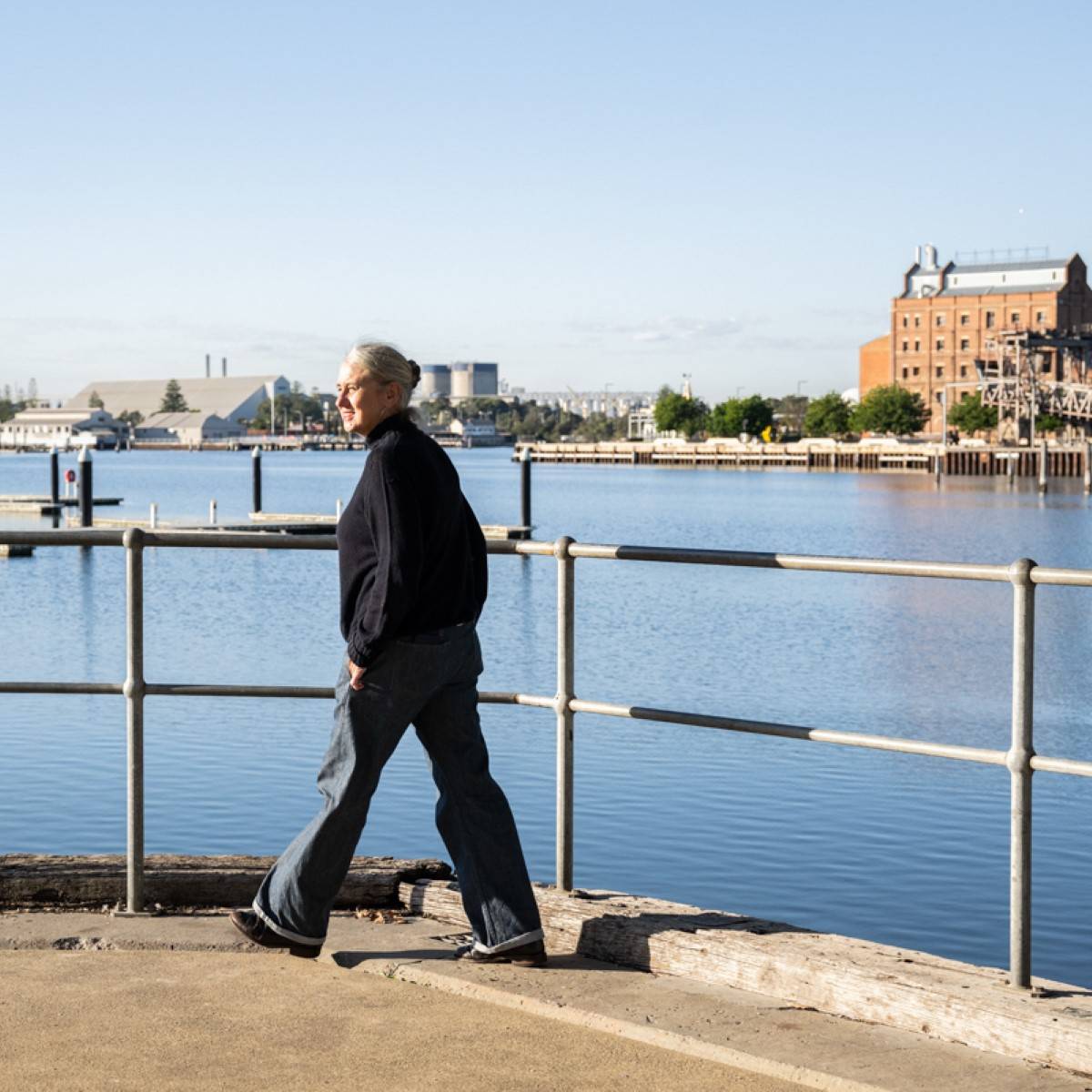Nathan Hawkes: Sustaining the Moment
For Nathan Hawkes, there’s just so much to enjoy in the simple pleasure of making.
Words: Camilla Wagstaff
When I visit Nathan Hawkes’ home and studio in the Southern Highlands of New South Wales – down a few kilometres of unsealed road flanked by ancient eucalypts – I’m greeted by five very large pastel drawings in various stages of completion. I’m also welcomed by Maggie, Hawkes’ adorable 2-year-old French sheepdog slash studio assistant.
One of the drawings is soft and romantic, a gestural figure’s long hair cascading over fragmented florals. Another is frenetic, energetic, the artist’s hand rendered in lively pinks and reds, like fireworks. Yet another is a systematic series of strips, almost meditative, in the softest greens and yellows. Viewing them individually, their distinctness and diversity are apparent. But when seen en masse, an intangible thread connects them, making them cohere as a series, even as Hawkes continues to resolve them.
Perhaps it’s their uniform format. Hawkes works almost exclusively on an impressive 220 x 150cm scale. “I can’t seem to get away from the scale I’ve been working in, it just suits me somehow,” says the artist. “I like it because it affords me more chances to make numerous transitions from one corner to another. The process of making work at this scale is often quite rough and physical, which I enjoy.”
It’s probably not an underlying conceptual theme. “My way of thinking about the world is very emotional and kind of atmospheric and untidy and indirect,” Hawkes reflects. “I don’t feel capable of working from a preconceived theme or idea. I’ve tried and it has never resulted in a drawing worthy of attention.”
Hawkes’ works instead begin with sensation; often a single, intuitive gesture of pastel on paper, a call and response. His marks are made with everything from fingers and sponges to stencils, sandpaper, vacuum cleaners, sheepdog paws and tails. His initial actions are very much material-based, grounded in a dialogue with the quality of mark, tone, form, and colour. “Sensation is kind of everything when I’m working,” he says. “I get so bored with self-expression because it’s so conscious and limited. Sensation can accommodate such a wider range of stimulus that doesn’t directly represent conscious ideas. In some ways, the word draw immediately implies sensation when it’s used to mean haul or intake. I like that parallel.”
For his forthcoming show at Chalk Horse in Sydney, Hawkes has been observing a wide variety of sensory states: bewilderment, confusion, boredom, mundanity, fantasy, desire, bliss, sadness, anger, apathy, overwhelm. Each state collaborates with, contradicts, and obliterates the next, within and across the works.
As usual, Hawkes will frame the drawings himself, the structures becoming a piece of art in their own right. Often furnished with cement, hessian, and general “gunky stuff” (for the upcoming series Hawkes has been collecting plastic wrappers and bitumen), Hawkes views his frames as a sort of chorus in a Greek drama – witness and responder to the work they surround.
There are more figures appearing in Hawkes’ recent drawings, which makes him uncomfortable. But discomfort is the goal, as it forces the artist to negotiate his materials in new ways, playing with and pushing the limits of paper and pastel.
“There is a tendency to rush toward an answer, a knowing. But I want to suspend that closure from happening too quickly,” he says. “I think if you can hang in there and sustain that moment of discomfort even a little bit, there is a space for insight and possibility that shows itself. If I can stay in the simple pleasure of making, there’s just so much to enjoy.” And so much that a simple drawing can become.
This article was originally published in Art Collector issue 105, July-September 2023.
Featured image: Nathan Hawkes, Two voices speaking, 2023. Chalk pastel on paper, 220 x 150cm. Courtesy: the artist and Chalk Horse, Sydney.









